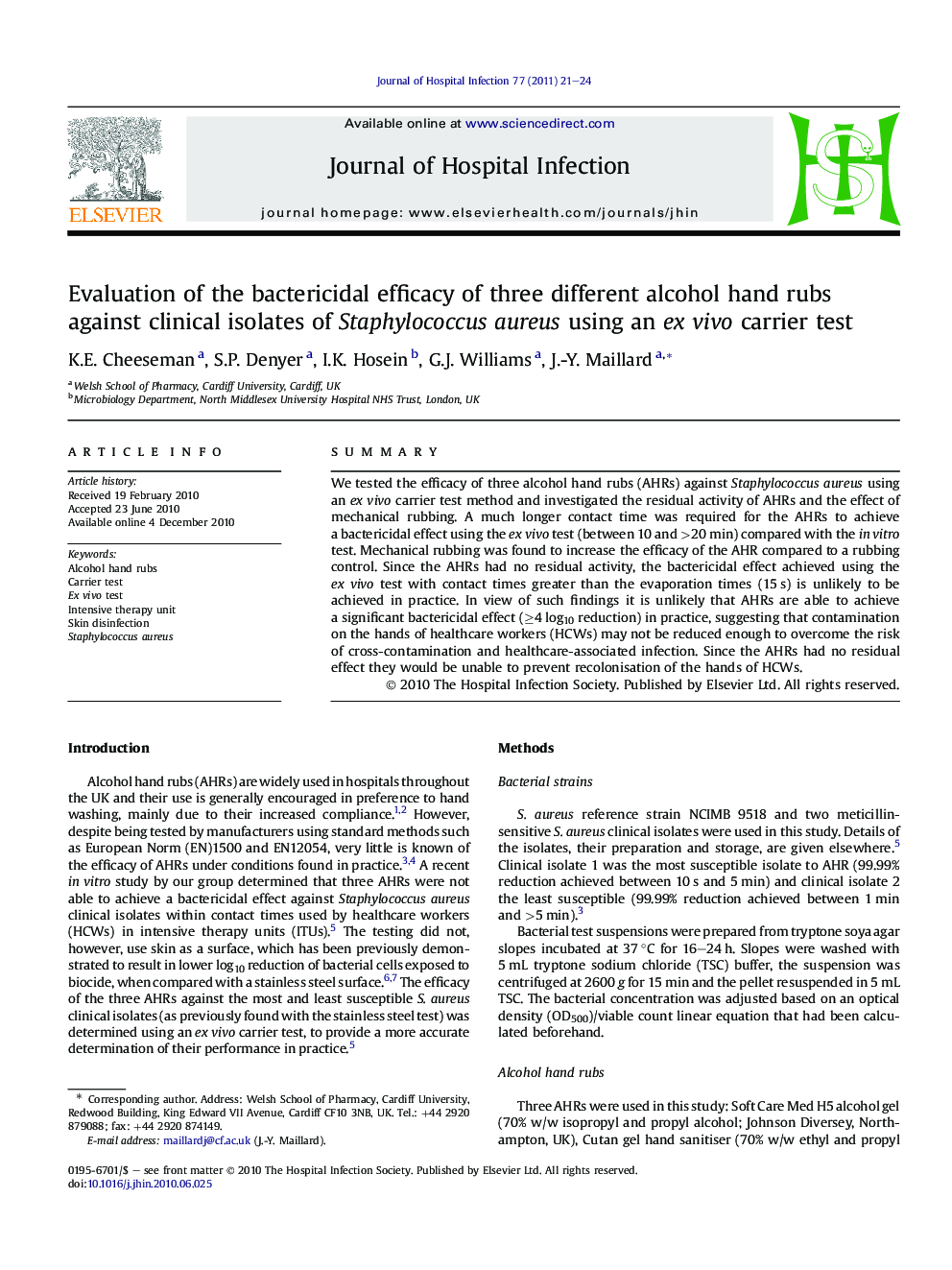| Article ID | Journal | Published Year | Pages | File Type |
|---|---|---|---|---|
| 3372417 | Journal of Hospital Infection | 2011 | 4 Pages |
SummaryWe tested the efficacy of three alcohol hand rubs (AHRs) against Staphylococcus aureus using an ex vivo carrier test method and investigated the residual activity of AHRs and the effect of mechanical rubbing. A much longer contact time was required for the AHRs to achieve a bactericidal effect using the ex vivo test (between 10 and >20 min) compared with the in vitro test. Mechanical rubbing was found to increase the efficacy of the AHR compared to a rubbing control. Since the AHRs had no residual activity, the bactericidal effect achieved using the ex vivo test with contact times greater than the evaporation times (15 s) is unlikely to be achieved in practice. In view of such findings it is unlikely that AHRs are able to achieve a significant bactericidal effect (≥4 log10 reduction) in practice, suggesting that contamination on the hands of healthcare workers (HCWs) may not be reduced enough to overcome the risk of cross-contamination and healthcare-associated infection. Since the AHRs had no residual effect they would be unable to prevent recolonisation of the hands of HCWs.
